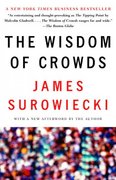Answered step by step
Verified Expert Solution
Question
1 Approved Answer
one Consider a firm with the following production function: (, ) = ... The price of labour (L) is GHS 4 per unit while the
one Consider a firm with the following production function: (, ) = ... The price of labour (L) is GHS 4 per unit while the price of capital (K) is 5 per unit. For parts (a) - (e) assume that this firm has 16 units of capital it cannot change in the short-run a) In ordinary language, explain what it means to say this production function exhibits diminishing marginal returns. b) Show that this production function exhibits diminishing marginal returns c) If the price of output is GHS 10 per unit, how many units of labour should the firm employ to maximize profit? d) At this quantity of labour (from part (a)), what quantity of output will the firm produce and how much profit will the firm make? e) Derive the firm's short-run total cost function. f) Derive the firm's marginal and average cost functions. g) What is the total cost of producing 100 units of output? For the rest of this question, assume that the firm is now free to choose any level of capital and labour. h) How many units of capital and labour will it choose to minimize the cost of producing 100 units of output? i) What is the total cost of producing the 100 units? Compare this with your answer in part e) and explain the difference or similarity. Problem two Consider the following stylized facts: Sugar is derived from two agricultural products grown in the US, sugar cane and sugar beet. Sugar cane grows only in certain areas (mostly Hawaii and Louisiana). Suppose that there are only 20 plantations capable of growing sugar cane, and that each plantation can produce up to 5 pounds of sugar per day, at a cost of $0.05 per pound. Assume that there are no fixed costs for producing sugar from sugar cane, so the (constant) marginal cost is also the average cost. There are 100 identical potential sugar beet farms, each with daily variable costs of production (in dollars) of x2-0.9x, and a fixed cost of $1 per day. In addition, the government will give each sugar beet farmer a subsidy of $1.00 for every pound of sugar produced on a given day. (a) What is the short run supply curve for a single sugar cane plantation? What is the short run supply curve for a single sugar beet farm? What is the industry supply curve for sugar? (b) Daily demand for sugar in the US is given by QD=109-100p, where p is the price per pound of sugar. What is the market price for a pound of sugar? What are the profits of cane growers? of beet growers? How expensive is the subsidy program (i.e., what is the sum total of all subsidy payments to beet farmers)? (c) Suppose that US demand for sugar increases to QD=240-100p. What is the new market price for a pound of sugar? What are the profits for each type of farmer? How expensive is the subsidy program now? Problem three Most weeks, the demand for long-stem roses can be approximated by QD = 2400 - 50p, where QD is the total quantity demanded (in dozens) at price p (per dozen). Currently, roses are supplied by 100 identical growers, each having total costs C=0.25q2+0.5q+36, where q is the number of roses (again, in dozens) supplied by the grower. The $36 cost can be avoided on a daily basis. (a) What is the short-run supply curve for each individual grower? Describe this curve both algebraically and graphically. (b) Derive the short-run market supply schedule, which gives quantity supplied as a function of price. (c) What is the equilibrium price for a dozen roses in this market? Sketch the market supply and market demand schedules. (d) How many dozens of roses will be supplied by each grower? (e) Assuming there is free entry into and exit from this market. Will there be entry or exits from this market going into the long-run? Explain your answer. Suppose the long-run average cost (LAC) is 3q-0.5q2. (f) Determine the market equilibrium price and quantity in the long-run. (g) How many individual growers of roses will there be in the long run
Step by Step Solution
There are 3 Steps involved in it
Step: 1

Get Instant Access to Expert-Tailored Solutions
See step-by-step solutions with expert insights and AI powered tools for academic success
Step: 2

Step: 3

Ace Your Homework with AI
Get the answers you need in no time with our AI-driven, step-by-step assistance
Get Started


